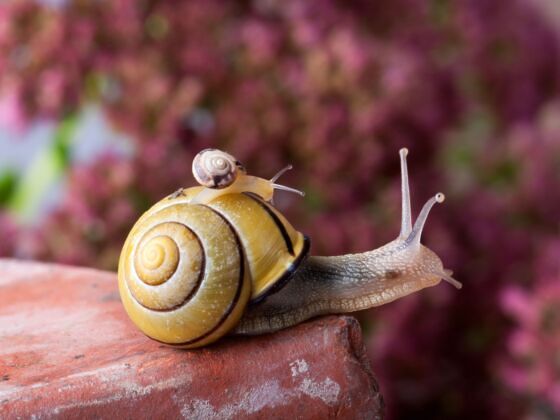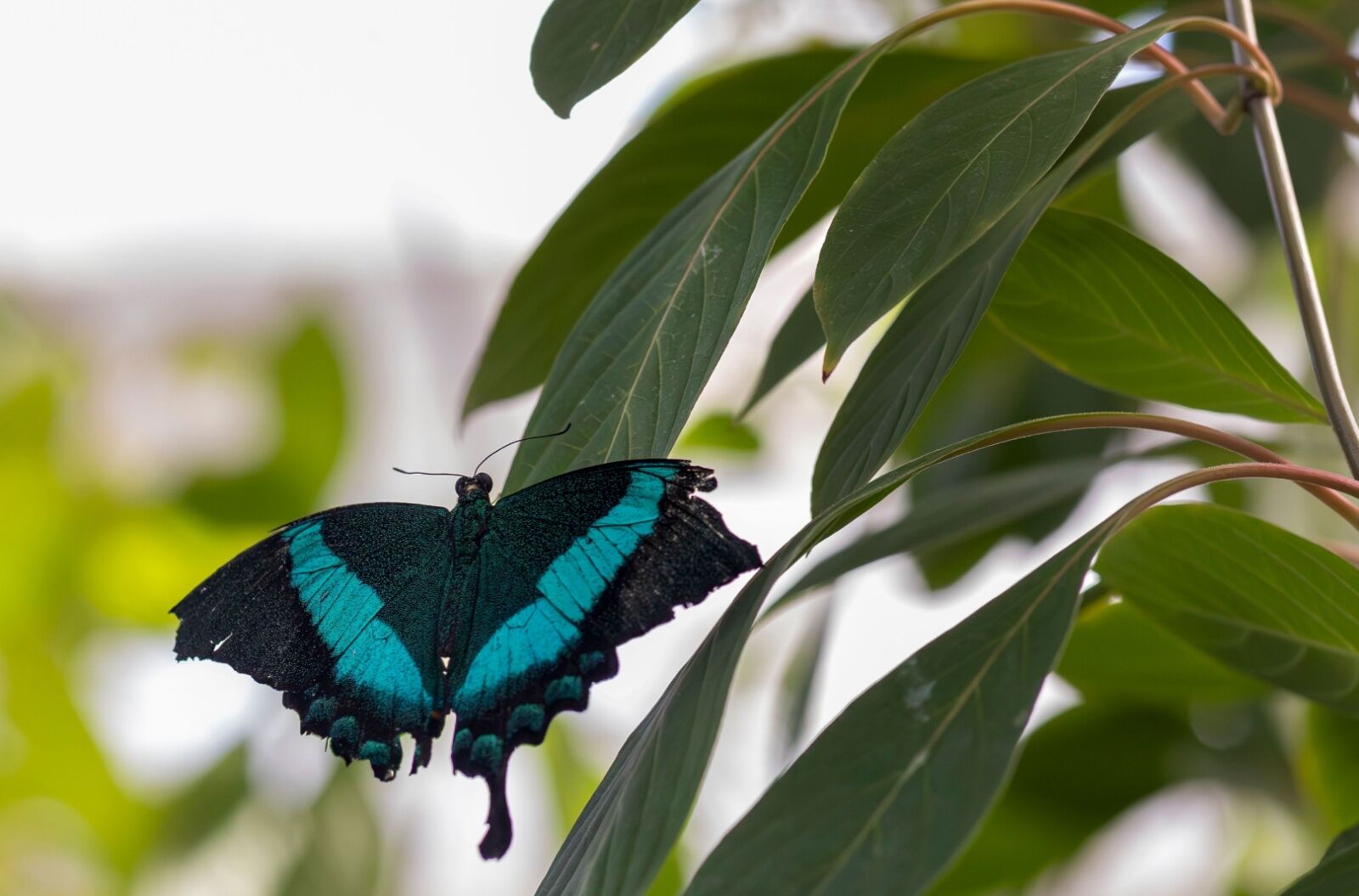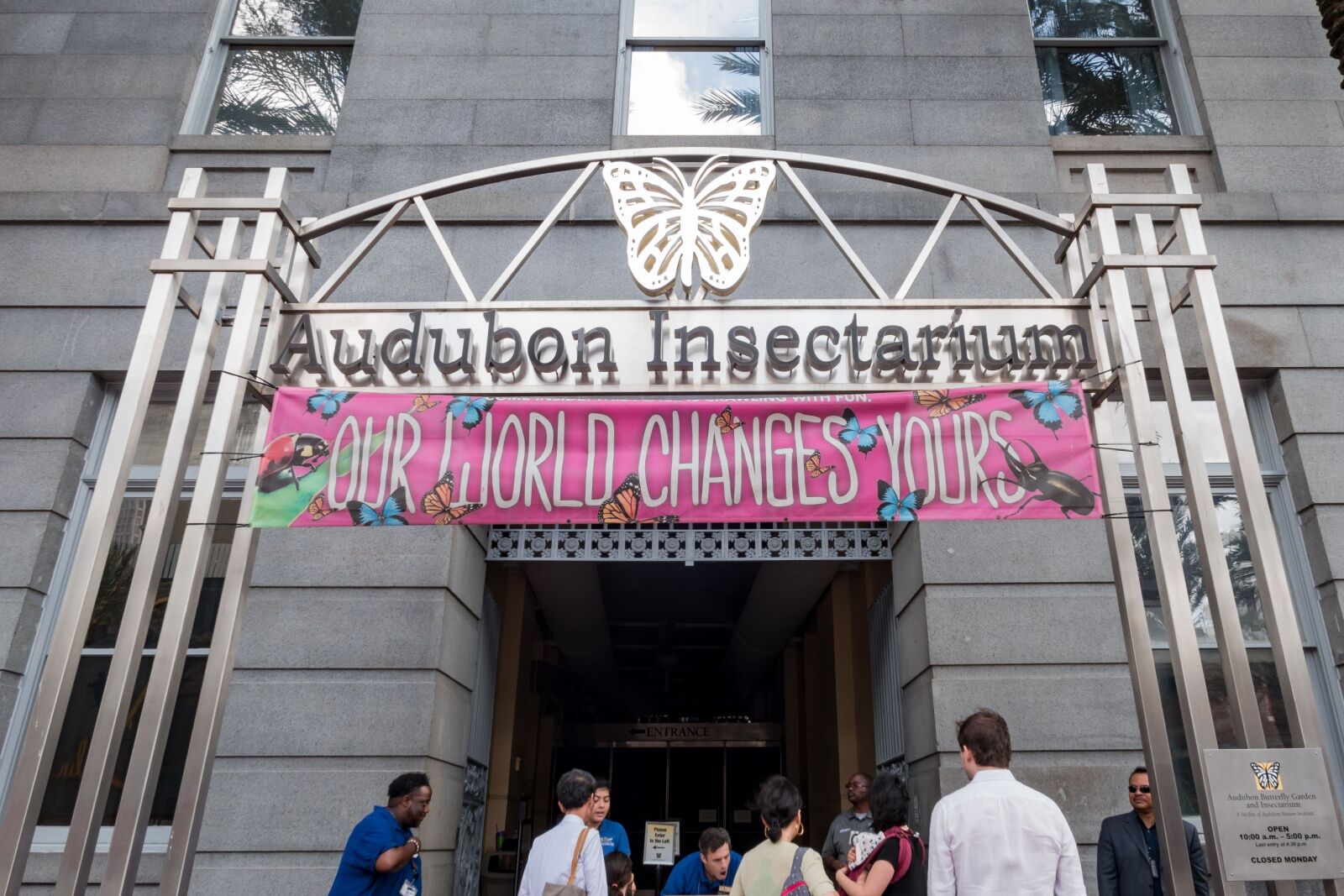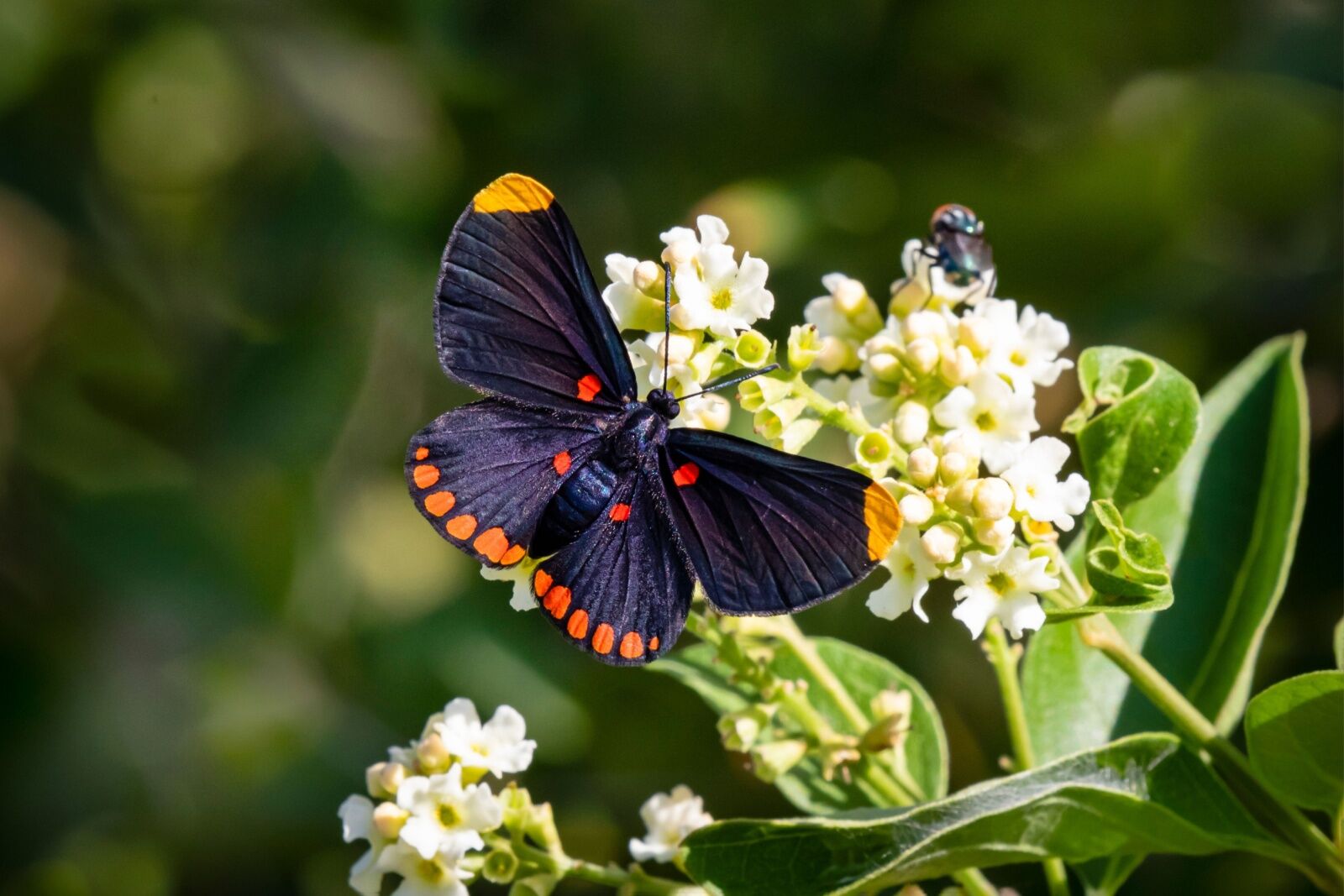In the wild, sea urchins decorate their spiny bodies with bits of shells and fallen mangrove leaves. But the urchins who live at the Butterfly Pavilion in Westminster, Colorado, have expanded options, thanks to an intern graduate student who 3D-printed for them tiny hats to see which styles they’d choose. Most of the urchins have a sophisticated flair, opting for top hats, though a few have gravitated toward Viking helmets and baseball caps.


An Invertebrate Zoo May Be the Quirky Attraction Your Next Vacation Needs
This experiment isn’t meant to be cute. It’s legitimate scientific research to learn more about the “covering behavior” sea urchins display in the wild – though it does serve the unintentional purpose of showing how endearing urchins can be. And that’s part of the point, said Sara Stevens, Director of Animal Collections at the Butterfly Pavilion. “It helps people really see them as animals with personalities, not just little balls of spikes,” she says.
Invertebrates, such as sea urchins, are animals that don’t have a backbone – or any bones, for that matter. Examples of invertebrates include spiders, bumblebees, beetles, and lobsters, and they make up somewhere between 97 and 99 percent of all animal species on Earth, depending who you ask.
“These remarkable creatures are more than fascinating. They are the foundation of all life on Earth, playing critical roles in pollination, nutrient cycling, and maintaining the balance of ecosystems that sustain us all,” said Stevens.
That means as humans, our well-being depends on a thriving and diverse invertebrate population. But they’re increasingly in trouble due to habitat loss, pesticide use, and climate change. So it’s more important than ever for us humans to find an expanded appreciations of the fascinating cast of characters in the invertebrate world. Some of those are charming gateway animals (meaning exciting animals that serve as an entry point for someone to engage more deeply with the natural world), such as octopuses and butterflies. Others can take a bit of warming up to, at least for some of us — especially for those that crawl.
Fortunately, a great way to nurture the process of becoming more comfortable with some of the more unique creatures around the world is to visit an invertebrate zoo when you travel. “Once we start sharing that these animals exhibit really interesting behaviors, people start to lower their guard, and that’s one of my favorite things in the world,” said Stevens.
Besides helping to expand personal boundaries and fostering curiosity, some invertebrate zoos are also important research centers and habitat conservation hubs, so buying an admission ticket helps fund that work. They’re also great places to learn about local fauna and how to help protect it. If you’re planning on outdoor activities while you travel, like trekking, cycling, or paddling, going to an invertebrate zoo ahead of time can add an extra layer of adventure. That way, you’ll be able to identify some of the mollusks (like snails and clams), annelids (worms), and arthropods (insects) you may see while outdoors in a new part of the country or world.
Some invertebrate zoos are considered “insectariums,” focusing solely on either butterflies, or insects in general. Others, like the Butterfly Pavilion, expand the scope into marine invertebrates and arachnids. Regardless of who lives at the zoo you visit, Stevens offers these tips to make the most out of your trip.
- Talk to staff members. They can tell you all of the animals’ quirks plus their favorite hiding spots, so you’ll see some you might have otherwise unknowingly passed by.
- Be patient and observant. “I see a lot of people glaze over an exhibit, not realizing it has tons of animals in it,” said Stevens. “But if you look closely and you take your time, you can really see some incredible behaviors.”
- For a quieter experience, go in the afternoons, when there’s a smaller chance of encountering school groups on field trips.
- Seek out Association of Zoos and Aquariums (AZA)-accredited facilities, and only visit facilities that maintain high standards of animal welfare.
- And if you want to get a butterfly to land on you, stand very still in a sunny spot, said Stevens. It also helps to wear bright colors, like yellows and reds. Remember, it’s okay if they touch you, but never touch back. Always check the ground before you step backward to make sure a butterfly isn’t sunning behind you on the ground.
Invertabrae zoos aren’t as popular or as well known as regular zoos or animal sanctuaries, but there are more out there than you’d think. Here are a few notable ones in tourism hot spots around the world.
Bayer Insectarium (Saint Louis, Missouri)
Like many invertebrate zoos, one of the main attractions of the Bayer Insectarium at the Saint Louis Zoo is butterflies. There, they flutter about in a tropical, geodesic dome shared with everything from rare flowers to dragonflies and turtles. The Insectarium has an additional 20 or so major exhibit areas that house more than 100 species of live insects and arthropods, including centipedes, flamboyant flower beetles, silk worms, and venomous golden orb-weaver spiders.
The insectarium is part of an active research and conservation breeding facility, and visitors can watch entomologists at work and even ask them questions about their research. If the insects aren’t enough to keep you occupied, the surrounding 90-acre AZA-accredited St. Louis Zoo should do the trick.
- Address: 1 Government Drive St. Louis, MO 63110
- Hours: Varies, currently 9 AM-4 PM
- Admission: Free (as is the zoo)
Butterfly Pavilion (Westminster, Colorado)

Photo: ZHartman Photography/Shutterstock
One of the Butterfly Pavilion ’s most popular exhibits is a 7,000-square-foot, walk-through tropical rainforest, home to a couple thousand butterflies. It also maintains a focus on marine invertebrates, with Colorado’s only Caribbean coral exhibit, complete with horseshoe crabs, shrimp, and sea stars. Other not-to-miss experiences include the tarantula ambassadors Rosie and Goldie (who guests can hold), a leaf-cutter ant colony, and native outdoor habitat gardens, as well as a play area popular with kids and families. Interestingly, the Butterfly Pavilion is peculiarly popular for date nights, said Stevens.
The Butterfly Pavilion is the world’s first AZA-accredited standalone invertebrate zoo, and as a nonprofit organization, focuses much of its scientific and research work on local and global habitat conservation and community outreach. It’s about 20 minutes north of downtown Denver, making it easy to reach for families visiting the city.
- Address: 6252 W 104th Ave, Westminster, CO 80020
- Hours: Daily, 9 AM-5 PM
- Admission: $10.95 for children, $13.95 for seniors 65+, $15.95 for adults
The Audubon Insectarium at the Audubon Nature Institute (New Orleans, Louisiana)

Photo: Kit Leong/Shutterstock
This insectarium is particularly beloved for its butterfly garden overlooking the Mississippi River, especially as guests can reserve a spot to help butterflies take their first flight as they leave the pupa stage of their lifecycle. But it also has more than 50 displays with live arthropods, or bugs with exoskeletons (like beetles, centipedes, and spiders), as well as a honey bee colony with clear viewing walls. It takes about an hour to go through (unless you stop for a snack to eat some of the locals at the Bug Appétit exhibit).
The facility is in downtown New Orleans in the historic former US customs house, next to the Audubon Aquarium. Both are AZA-accredited and maintain a heavy focus on conservation, research, and community outreach, and one ticket is good for entry to both destinations.
- Address: 1 Canal St, New Orleans, LA 70130
- Hours: Daily, 10 AM-5 PM
- Admission: $34.95 for children and seniors, $35.95 for adults (includes aquarium)
The Richard M. Bohart Museum of Entomology (Davis, California)
The Bohart Museum houses one of the largest bug collections in the United States, with more than seven million species from around the world, including 35,000 tardigrades (also called “water bears”). It also hosts the California Insect Survey, a storehouse of insect biodiversity first collected in the 1930s. As for live animals, there’s usually a few to be found, including walking sticks (also known as stick bugs, or phasmids), tarantulas, and hissing cockroaches.
The museum is part of the University of California at Davis, and at first glance, seems small. But it’s a working entomology lab, which means the students there can expand your visit into a much longer affair by showing you cases that aren’t on public display. Visiting is completely free, but the hours can vary, so check the website in advance before your trip.
- Address: University of California, Davis, Academic Surge, 455 Crocker Ln Room 1124, Davis, CA 95616
- Hours: Varies; currently Tue & Wed, 1:00-4:30 PM
- Admission: Free
The National Butterfly Center (Mission, Texas)

Photo: Danita Delimont/Shutterstock
On the southern tip of Texas in the Rio Grande Valley sits the National Butterfly Center. It’s an outdoor sanctuary where more than 200 species of butterflies have been spotted. According to the center, that’s the “greatest volume and variety of wild, free-flying butterflies in the nation.” The flutterers aren’t contained, but choose to stay there, thanks to the welcoming subtropical climate – and the fact that Butterfly Center staff created the perfect habitat for them by planting the largest native plant botanical garden in the country.
While roaming the trails in the 100-acre preserve, you’re bound to see a lot of other interesting insects, birds, and other native wildlife. The center is part of the North American Butterfly Association, a nonprofit dedicated to teaching people how to create and conserve butterfly habitats.
- Address: 3333 Butterfly Park, Mission, TX 78572
- Hours: Daily, 8 AM-5 PM
- Admission: $5 for children, $10 for adults
Dr. Beynon’s Bug Farm (St. Davids, Wales, UK)
A combination of wildlife conservatory and farm, The Bug Farm includes a museum with one of the UK’s largest private butterfly collections, a tropical invertebrate zoo with live bugs from around the world, and even a bug art gallery. It sits on a 100-acre farm and wildlife habitat, with lots of walking trails.
The whole experience, including a cafe serving up insect-based dishes like spiced cumin and mealworm hummus or mixed insect pakoras. The entire experience is meant to encourage and teach guests about sustainable farming and eating, while also inspiring people to look for and appreciate invertebrates in their daily lives. The Bug Farm also dives into conservation work, including planting woodland habitats and trying to bring back the locally extinct marsh fritillary butterfly.
- Address: Lower Harglodd Farm, St Davids SA62 6BX, United Kingdom
- Hours: Varies seasonally
- Admission: 8.50 euros for adults (about $8.50), 6.5 euros for children (about $6.50)